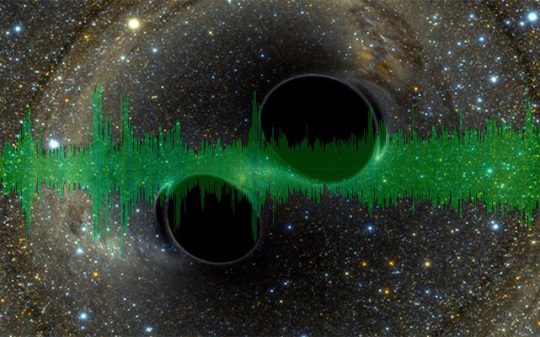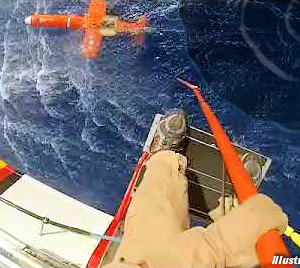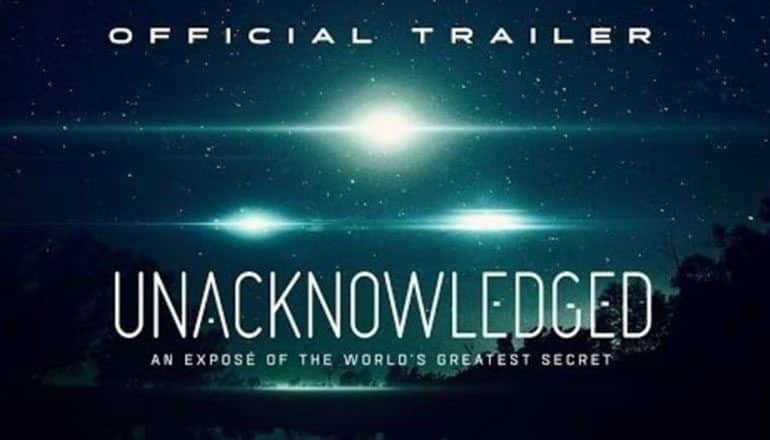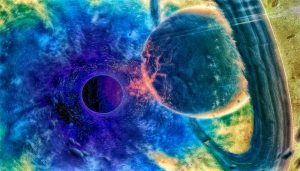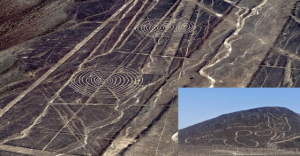A less-known fact about the groundbreaking discovery of the gravitational waves is that, only half a second after the waves were detected, another faint signal originating from the same region in space was captured by NASA’s Fermi Telescope.
In the chaotic event of two black holes merging together, scientists have observed that high-energy light particles were emanating from this event. Before going deeper into details, it’s essential to understand that such an event could change the way we perceive the principles of physics that apply in our Universe.
NASA explained that “gamma-rays arising from a black hole merger would be a landmark finding because black holes are expected to merge ‘cleanly’, without producing any sort of light.”
On September 14, while investigating the merging of two black holes (entitled binary black holes), the Laser Interferometer Gravitational-Wave Observatory (LIGO) captured the first ‘palpable’ proof of Einstein’s gravitational waves.
This is indeed a great achievement, as no one has ever seen a black hole merger before – an imposing event that partook in the universe over a billion years ago and distorted the fabric of space and time, sending ripples throughout the Universe that have reached the Earth only last year.
However, this wasn’t the only notable discovery made that day. NASA has just confirmed that on September 14, their Gamma-ray Burst Monitor (GBM) on the Fermi Gamma-ray Space Telescope picked up a mysterious gust of gamma rays that happened only half a second after the gravitational waves were detected. Furthermore, the signal came from the same area in space.
According to NASA scientists, there’s a 0.2 percent chance of this being just a coincidence. In other words, the mysterious signal modifies the guiding principles of physics that we are accustomed to. Before publicly debating this, NASA plans to study other similar events to clear all doubts, but they too consider this to be something linked to the gravitational waves event, and are now trying to track the source signal by scouting the region where the two black holes had merged 1.3 billion years ago.
“Currently, gravitational waves observatories possess relatively blurry vision. For the September event, dubbed GW150914 after the date, LIGO scientists could only trace the source to an arc of sky spanning an area of about 600 square degrees, comparable to the angular area on Earth occupied by the United States, NASA explains.
Assuming the GBM burst is connected to this event, the GBM localization and Fermi’s view of Earth combine to reduce the LIGO search area by about two-thirds, to 200 square degrees.”
So what’s so ground breaking when it comes to light being spit out of a black hole merger you might ask? As sciencealert explained in an article – “…simply put, gas is needed in order to generate light, and there should be no gas around two soon-to-merge black holes, because it should have been swallowed up by one of them long before the pair collide.”
At least that’s what scientists thought until now. There are two possibilities for the time being – either the gamma ray burst was a coincidence, an independent event from the GW150914 black hole merger, or the colliding black holes actually created an observable gamma-ray diffusion, meaning that some principles regarding black holes need to be refurbished or reconsidered.
“This is a tantalizing discovery with a low chance of being a false alarm, but before we can start rewriting the textbooks we’ll need to see more bursts associated with gravitational waves from black hole mergers,” said Valerie Connaughton, member of the GBM team.
More data needs to be available before we should expect a conclusive answer from NASA. However, the possibility of gas particles escaping the high-energetic pull of merging black holes is sure to raise a lot of question marks.
